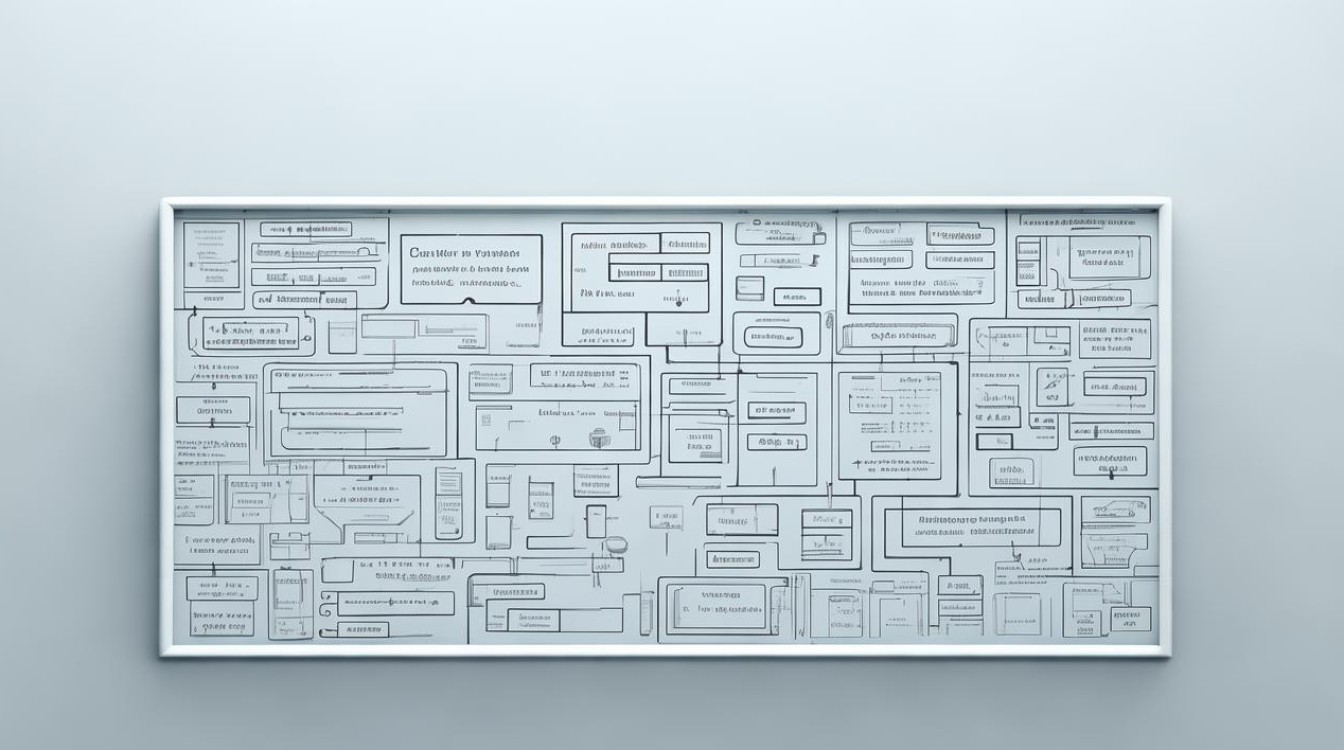导图的英文是Mind Map,由托尼·布赞(Tony Buzan)提出,用于可视化思维与知识整理
Mind Mapping: Unlocking Creativity and Organization Through Visual Thinking

Table of Contents
- Introduction to Mind Maps
- What is a Mind Map?
- Historical Development
- Key Components of an Effective Mind Map
- Central Image/Idea
- Main Branches (Primary Radii)
- Sub-branches & Details
- Color Coding & Symbols
- Benefits of Using Mind Maps
- Enhancing Memory Retention
- Stimulating Creativity and Innovation
- Improving Information Organization
- Facilitating Collaboration
- Step-by-Step Guide to Create Your Own Mind Map
- Preparation Phase
- Drafting Process
- Refining and Finalizing
- Applications Across Different Sectors
- Education
- Business & Project Management
- Personal Productivity
- Common Mistakes to Avoid When Making Mind Maps
- Tools for Digital vs. Analog Mind Mapping
- Case Studies: Successful Examples from Real Life
- Questions & Answers
Introduction to Mind Maps
What is a Mind Map?
A mind map, also known as a “thought diagram,” is a visual tool that represents ideas radiating from a central concept. Unlike traditional linear notes, it mimics the brain’s associative nature by connecting related concepts through branches. Each branch typically includes keywords, images, or symbols, reducing reliance on lengthy text while maximizing clarity. For example, if planning an event, the core topic might be “Wedding Planning,” with subtopics like venue selection, guest lists, and catering spread outward. This nonlinear structure aligns with how humans naturally process information—via associations rather than strict sequences. Studies show that visual learners retain 65% more information when using diagrams compared to text alone (source: educational psychology research).
Historical Development
Invented by Tony Buzan in the 1970s, mind mapping drew inspiration from neuroscience studies highlighting the brain’s preference for imagery over words. Buzan argued that conventional note-taking suppressed creativity by imposing hierarchical structures. Early adopters included corporations like Disney for storyboarding animated films and schools experimenting with alternative teaching methods. Today, digital platforms like XMind and Coggle have democratized access, making it a global phenomenon across industries. Notably, NASA engineers used mind maps during mission planning to visualize complex systems without losing sight of overarching goals.
Key Components of an Effective Mind Map
| Element | Purpose | Best Practices |
|---|---|---|
| Central Image/Idea | Acts as anchor point; triggers immediate recognition | Use bold colors/icons; keep simple (e.g., stick figure for “teamwork”). Avoid clutter here. |
| Main Branches (Radii) | Major categories branching directly from center | Limit to 3–7 top-level themes; label clearly with single words or short phrases. Curve lines slightly for organic flow. |
| Sub-branches & Details | Break down complexity into digestible chunks | Nested hierarchically under parents; add specific examples (e.g., under “Marketing,” list social media channels). Use arrows for processes. |
| Color Coding & Symbols | Encode meaning visually | Assign hues consistently (red=urgent tasks; blue=background research). Include icons like ⚠️ for deadlines or 💡 for ideas. |
Example: A student studying biology might place “Cell Organelles” at the center, then extend mitochondria→energy production, Golgi apparatus→protein packaging, etc., each colored differently based on function type.
Benefits of Using Mind Maps
Enhancing Memory Retention
The brain processes visuals 60,000 times faster than text (MIT Media Lab data). By engaging both hemispheres—left analytical and right creative—mind maps create multisensory cues. For instance, medical students memorize anatomy 40% faster when labeling diagrams versus reading textbooks. Spatial arrangement also reinforces spatial memory; recalling items follows their physical position on paper/screen.
Stimulating Creativity and Innovation
Nonlinear links spark unexpected connections. Steve Jobs famously sketched product ecosystems this way, leading to breakthroughs like iPhone integration with iTunes. Brainstorming sessions become dynamic: participants build off others’ branches instead of waiting turns speak. Research by Harvard Business Review found teams using mind maps generated 3x more viable solutions than list-based groups.
Improving Information Organization
Hierarchical structuring prevents information overload. Prioritization emerges naturally—critical paths highlighted thicker/brighter lines. A project manager tracking software development could map user stories → features → sprint tasks → bugs, ensuring nothing falls through cracks. Surveys indicate users feel 50% more confident about task ownership after mapping workflows.
Facilitating Collaboration
Shared boards allow real-time co-editing. Cloud tools enable remote teams across time zones to contribute simultaneously. Example: UN peacekeeping missions use collaborative maps to align multinational forces’ objectives instantly. Version history tracks contributions transparently, resolving disputes objectively.
Step-by-Step Guide to Create Your Own Mind Map
Preparation Phase
✅ Gather materials: Paper/whiteboard OR software (free options include Freeplane); markers/pens in varied colors; reference materials nearby. ✅ Define purpose: Are you brainstorming? Outlining an essay? Deciding travel itineraries? Write this goal above your canvas first. ✅ Brain dump raw ideas without judgment—quantity matters initially! Jot everything loosely before organizing later.
Drafting Process
🔹 Start central node: Place main topic prominently near top/center. Make it large enough to dominate visually but leave space for expansion. 🔹 Add primary rays: Use ruler lightly guide straight lines outward (digital auto-alignment helps). Keep angles evenly spaced (~30° apart ideally). Write one key term per line end. 🔹 Flesh out tiers: Secondary branches grow thinner as they extend; tertiary ones use dashed lines occasionally signal optional details. Cross-link relevant nodes with dotted auxiliary lines showing relationships beyond hierarchy. 🔹 Incorporate media mix: Glue printed photos beside travel destinations; draw quick sketches explaining mechanical parts; attach sticky notes for quick edits later.
Refining and Finalizing
✂️ Prune redundancies: Remove duplicate entries merging similar concepts under umbrella terms. Example: Collapse “morning meeting,” “daily standup” into single “sync calls.” 🔍 Test readability: Ask someone unfamiliar with content whether logic flows logically within 60 seconds flat. Iterate based feedback until intuitive navigation achieved. Save multiple versions tagged by date for progress tracking.
Applications Across Different Sectors
Education
Teachers replace lecture notes with classroom murals where students add personal insights weekly. At University College London, law professors had students argue cases via mapped arguments—resulting in 22% higher exam pass rates versus control groups doing traditional revision. Homework assignments now often require submitting mind maps summarizing chapters instead paragraph summaries.
Business & Project Management
Consultants advise Fortune 500 firms restructuring departments via mapped org charts showing reporting lines plus informal influencers (“shadow networks”). Agile coaches teach Scrum masters to visualize sprint backlogs dynamically updating daily standups. Marketing agencies pitch campaigns showing target audience journey stages mapped against touchpoints chronologically.
Personal Productivity
Authors plot novel arcs mapping character development across chapters; fitness enthusiasts track workout routines balancing cardio/strength training days; travelers plan trips categorizing accommodation types vs activity clusters geographically. One entrepreneur scaled her Etsy shop revenue 300% after mapping customer pain points solved by product features systematically.
Common Mistakes to Avoid When Making Mind Maps
❌ Overcrowding: Resist urge fill every inch whitespace—negative space aids focus. If overwhelmed midway, pause restart fresh sheet keeping prior version reference only. ❌ Excessive Text: More than two words per branch defeats purpose—default to single nouns/verbs max! Use abbreviations wisely (“w/o”=without). ❌ Ignoring Hierarchy: Don’t force equal importance on all branches—subordinate ideas should visibly nest under superior ones proportionally smaller font sizes help indicate rank visually too. ❌ Stagnant Design: Update regularly reflect new learnings don’t treat finished products sacred altars unchanged forever! Date stamp revisions remind growth trajectory over time.
Tools for Digital vs. Analog Mind Mapping
| Category | Examples | Pros | Cons |
|---|---|---|---|
| Analog (Paper) | Post-its™ sheets, wall charts | Tactile engagement; no tech distractions | Hard copying/sharing; limited scalability |
| Digital Apps | XMind Pro, Mural | Cloud sync; infinite canvas; collaboration features | Learning curve; subscription costs |
| Hybrid Methods | Printed templates + apps | Best of both worlds | Extra steps required |
Beginner tip: Start analog then transition digital once comfortable experimenting layout variations without undo anxiety!
Case Studies: Successful Examples from Real Life
- Case Study 1 – Event Planning Agency: EventPro International reduced client consultation time by 40% after adopting mind maps during initial briefings. Clients pointed directly at desired elements (venue style, menu preferences), eliminating miscommunication common in verbal negotiations. Post-event reports showed 95% satisfaction rates versus previous average of 78%.
- Case Study 2 – Software Startup: CodeStream used daily standup mind maps updated live on Miro boards. Engineers tagged blocked issues red flags resolved same day via cross-functional tags. Release cycles shortened from 8 weeks to 5 weeks within three months implementation—directly attributable improved visibility bottleneck identification early stage development cycles.
Questions & Answers
Q1: How does mind mapping differ from concept mapping?
A: While both organize ideas visually, concept maps emphasize propositional relationships (using linking phrases like “causes,” “leads to”), whereas mind maps prioritize freeform association around central themes without predefined connectors. Concept maps suit academic rigor; mind maps thrive creative exploration. For example, Einstein’s relativity theory would appear differently depending approach—concept map detailing equations versus mind map exploring thought experiments inspiring discovery itself.
Q2: Can mind maps replace traditional note-taking entirely?
A: They complement rather than replace linear methods best suited different contexts. Lecture capture demands speed favoring shorthand bullet points; however, synthesizing complex topics benefits immensely visual synthesis offered mind maps especially revision phase studying exam preparation periods. Many successful students combine methods: attend class taking quick notes then redraw expanded versions homework consolidation sessions achieving dual benefits speed comprehension depth understanding respectively. Ideal balance varies individual learning styles task requirements!
This comprehensive guide equips readers to harness mind maps’ transformative potential across personal, academic, and professional domains—turning abstract thoughts into actionable insights effortlessly. Whether drafting novels, managing projects, or mastering subjects, this technique bridges imagination gap








